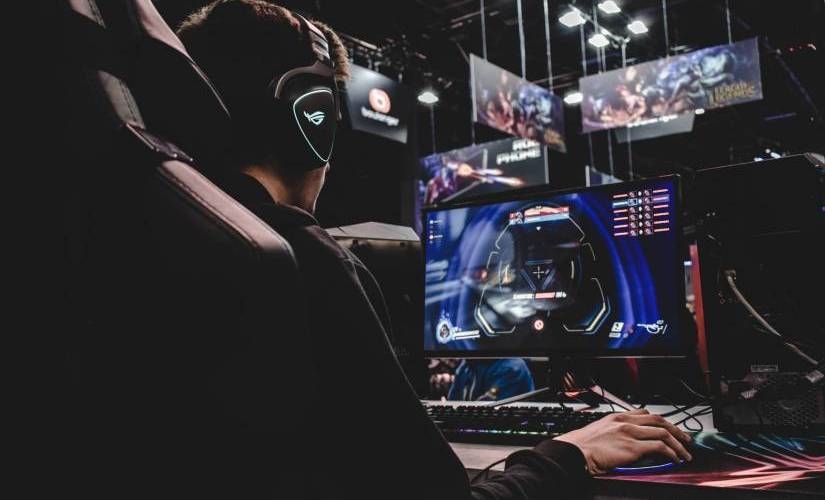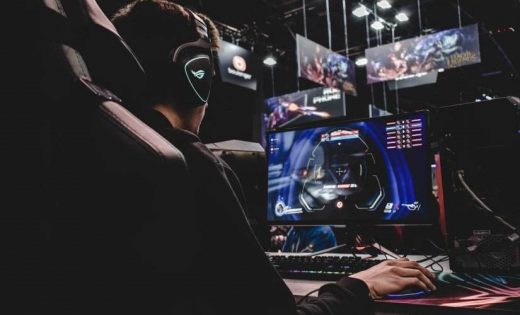Could Gamifying Blockchain Lead to Greater Adoption Overall?
Could Gamifying Blockchain Lead to Greater Adoption Overall?

In 1996, Japanese video game developer Game Freak redefined portable gaming with Pokémon Red and Blue, companion titles that used tradable virtual creatures to merge digital achievement with a real-world sense of ownership and transaction.
Today, blockchain games represent a bold new extension of this type of gaming: full-fledged game economics. In this case, the “gotta catch ‘em all” mentality of the Game Boy age is applied to a network of decentralized collectibles and real-world payouts, and people are throwing an insane amount of money at these games.
Could Gamifying Blockchain Lead to Greater Adoption Overall?
Take CryptoKitties, for example. Fitz Tepper, the VP of Operations at Rally Rd, calls CryptoKitties “the digital version of Pokemon cards but based on the Ethereum blockchain.”
Since CryptoKitties’ launch in 2017, it’s already seen over $ 1.3 million in transactions. It became so popular so quickly that players began experiencing delays and long-loading times during gameplay. The reason? It accounted for about 15 percent of all Ethereum traffic.
Let the Blockchain Games Begin
There are numerous blockchain games that feature intuitive virtual marketplaces where non-fungible tokens (NFTs) commodify digital assets, adding legitimate value to in-game staking and swapping.
The growing communal experience has promising implications for blockchain as a whole, suggesting a future of innovative, cross-industry applications transcending cryptocurrency alone.
Blockchain gaming is positioned to signal a “sea-change” for the industry at large, balancing its past failures and increasing its potential for widespread adoption in the future.
Its impact is already being seen. The global gaming market was up to $ 159 billion in revenue last year and is expected to increase to $ 200 billion by 2023.
The Non-fungible token (NFT) market in the meantime already more than doubled in 2021 compared to the 2020 year alone (c. $ 400m), and it is expected to reach $ 3bn in size by 2022 already.
Learning from a Turbulent Past
Blockchain gaming has been around for longer than many are aware, and its mostly benign past is a byproduct of its initial flaws and complexities.
Early blockchain games suffered due to limited technology, almost nonexistent regulation, and archaic handling of wagers and payouts. The games also demanded considerable operational knowledge of cryptocurrency and blockchain.
Collectively, these factors repelled many would-be players, and many blockchain experts avoided discussing or investing in games as viable industry stepping stones.
Game Devs are Resilient and Pivot Quickly
However, game developers were resilient, adapting to rapid technological advancements and fine-tuning both usability and virtual infrastructure.
With Cryptokitties leading the way on the Ethereum network in 2017, blockchain gaming finally rose to prominence thanks to NFT personalization and the same collection elements that popularized Pokémon games, Beanie Babies, Tamagotchis, and other similar cultural phenomena.
Developers are now ready to harness this two-pronged appeal and redemand attention from industry analysts and investors alike.
Creating New Demand
The blockchain industry’s narrative shift has been, in part, serendipitous with a growing emphasis on immersive video game technology.
Now, NFT-based blockchain games have joined VR and AR titles in blurring the line between reality and digital environments, supplementing those experiences with a direct vein into real-life financial consciousness.
In establishing this niche, developers have created their own sub-demand tailored for a unique community of gamified NFT traders.
How to Map Token and NFT Success
“The success of these tokens and NFTs will ultimately depend on their usability and value to the gamer,” Adrian Krion, CEO of Spielworks, wrote in an article for Nasdaq. “Developers are essentially [now] able to construct their own economics and ecosystems, and connect with each other through them.”
In a broader sense, this newfound demand is a microcosm of blockchain’s versatility, which is key in communicating its potential.
Ever since “blockchain” entered the public lexicon in the late 2000s, it has been all but defined by its cryptocurrency capabilities. Using the cryptocurrency capabilities as its versatility measure is a cruel understatement when weighing blockchain’s potential impact on completely different sectors.
The Highly Successful Gaming Industry
Consider the current online gaming industry: a market that is highly successful, yet rife with hackers and fraudulent activity that threatens the integrity of communal gameplay.
While these actions are subject to existing vetting efforts, they could be theoretically eliminated when applied to an NFT blockchain. In turn, having gaming on the NFT blockchain could generate more activity on game servers, increase in-game purchases — and ultimately stimulate both the virtual and real-world economy.
Will the Play be Non-Hackable?
In this case, the mere suggestion of non-hackable assets paints a picture of a fully redefined industry.
The sophistication of such an action could be a harbinger of equivalent refinements in other industries — most notably on the basis of security or sustainability.
Learning New Lessons
While the above information is undoubtedly exciting, it comes with a major caveat: the current blockchain gaming industry, though vastly improved since the early 2010s, is far from infallible.
To prove its fluidity across industries, blockchain must first use its NFT games to showcase consistent self-innovation, scaling itself to match an influx of players and transactions.
Perhaps the biggest hurdle in this process is ensuring decentralization and security are not sacrificed for stronger performance.
One crypto enthusiast wrote that this so-called “trilemma” is the primary issue plaguing most up-and-coming blockchain games.
It often boils down to a difficult choice between security or NFT viability in tandem with efficiency. In order for blockchain to broadly garner adoption in separate industries, “all three characteristics, security, scalability, and decentralization must be resolved on the first layer,” he wrote. “And without any compromises or sacrificing any part.”
Who is Solving the Three-Prong Issue?
Luckily, prominent blockchain names are actively working to solve the trilemma by means of sharding and proof of stake (PoS) mechanics. Additionally, disruptive algorithmic tactics that strive to increase efficiency and scalability while upholding virtual security.
Time will tell if these efforts can stabilize blockchain for a larger workload, but for now, they remain a promising roadmap.
What’s more, developers are again proving their fortitude in keeping games fresh and accessible. Convergent NFT advancements have given way to a freer marketplace for players, which has spiked popularity via community building and transparency.
What Do Consumer’s Demand?
Consumers want more governance over their gameplay and are flocking to blockchain games that allow them to propose changes, suggest new digital assets, and recommend additional features in exchange for in-game tokens.
Such components are already attracting the involvement of big industry names like Ubisoft and Square Enix, highlighting blockchain’s growing credibility in corporate eyes.
Historically, video games have proven influential on society and culture — from military training to city planning — and blockchain is arguably their most important stage to date.
Games are still acting as an industry proving ground, but they are closer than ever to catalyzing unprecedented change.
Conclusion
A powerful combo of gaming + blockchain + NFT + DeFi brings a whole new era to avid players where they can finally be not only a participant — but rather a full member of the game economy and its ecosystem.
Image Credit: florian olivo; unsplash; thank you!
The post Could Gamifying Blockchain Lead to Greater Adoption Overall? appeared first on ReadWrite.
(38)


